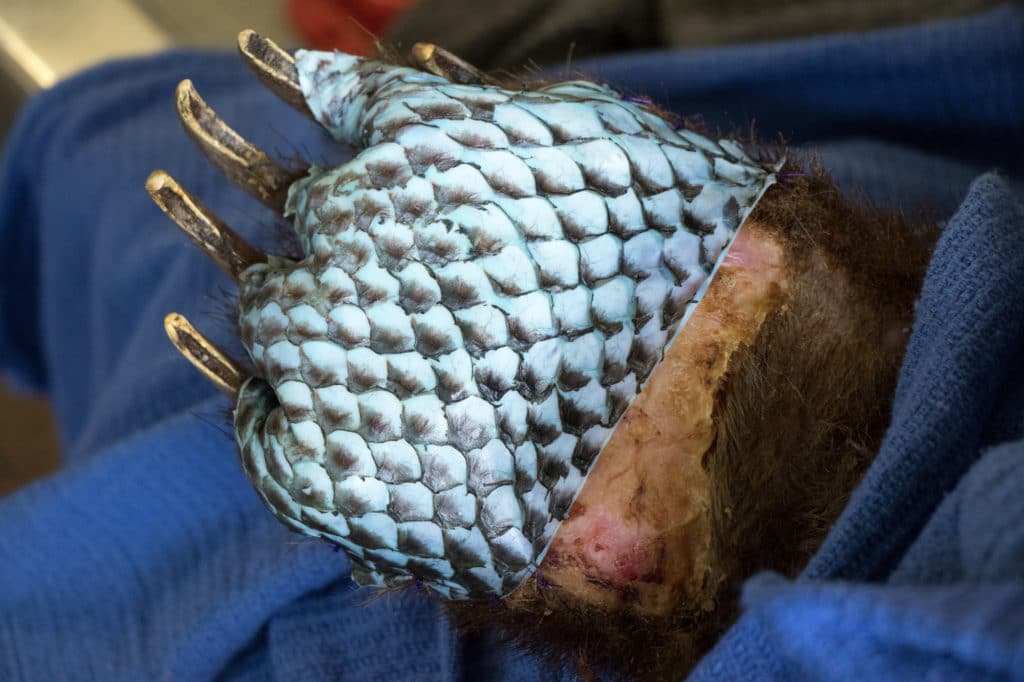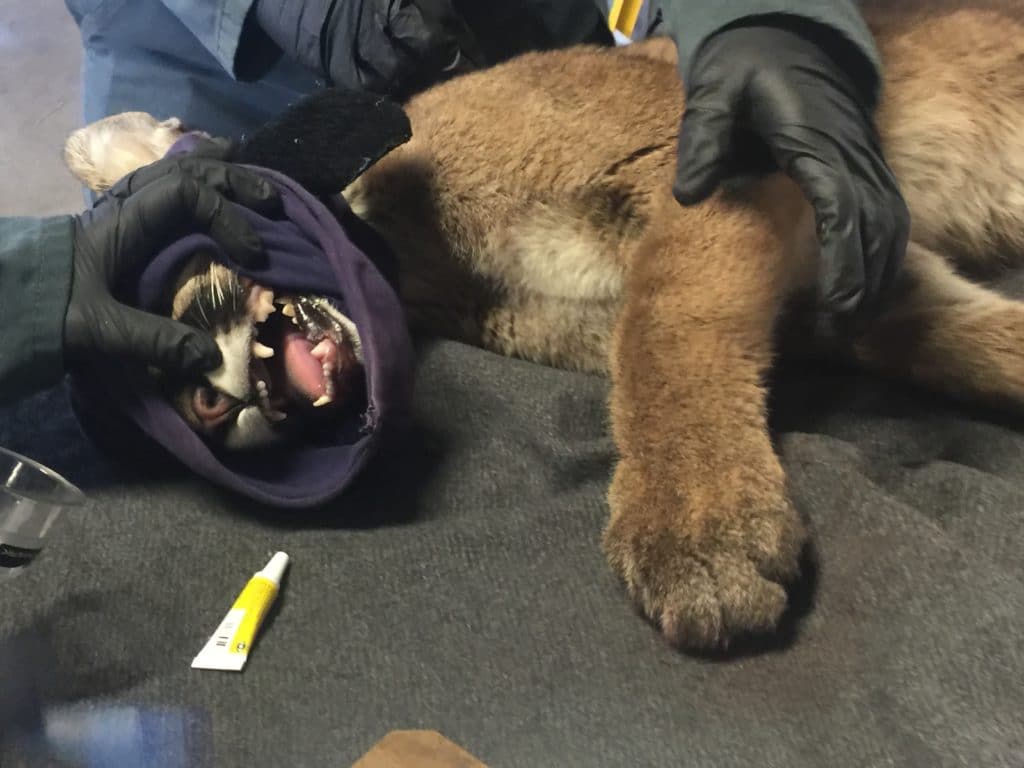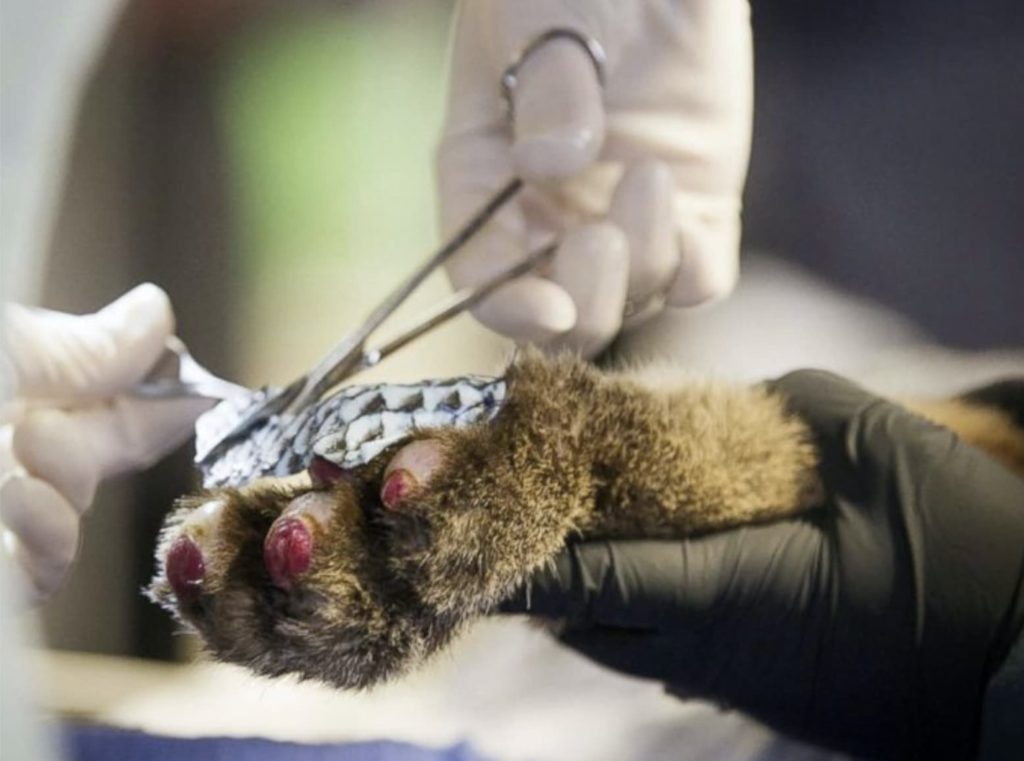
02 Jun How Fish Skin Is Helping Burns Victims – Including This Mountain Lion
How can a fish help a mountain lion injured by fire? Well, amazingly, with its skin!
A 5-month-old mountain lion with second and third degree burns on all four paw pads, resulting from the California bushfires, is being treated with a “bandage” first tried in Brazil: fish skin.
Sterilised tilapia skin has been recently recognised as an effective “biological band-aid” that provides three key benefits – mechanical protection due to the scales, a reduction in pain, and faster healing times. This last quality is due to the fact that the tilapia skin has been found to have up to five times more collagen than human skin that, when transferred to the burned skin, speeds the healing process.
Having heard about this unusual material after studying the work of doctors in Brazil, veterinarian Dr Jamie Peyton recognised the opportunity to help the mountain lion with this new technology. In addition to its medical properties, Dr Peyton also recognised that tilapia skin solved a number of problems unique to working with wild animals. Two of the most pressing of these are how often you can handle the animal, and if it will interfere with its surgical site after you have finished. With tilapia, not only do these bandages accelerate wound-healing and reduce pain, but they are also stitched in place over the burn – meaning that they don’t require frequent changes. And, being made of fish skin, if the patient decides to eat the bandage (as tends to happen in this line of work), it’s not as much of a disaster as it would normally be!

As the importation of sterilised tilapia skin from Brazil was not possible, Dr Peyton instead sourced the fish from her local markets and medically sterilised the skin for a week prior to the procedure. In Brazil, this is done with radiation which means that it can be packaged and stored for up to two years.
Then, during a three-hour operation, the mountain lion’s wounds were thoroughly cleaned and the tilapia bandages were cut to the shape of each paw. They were sutured onto the surrounding healthy tissues of the foot, and the animal was woken from its anaesthetic. It was later released with the bandages in place, with the aim being for the artificial skin to remain on the foot long enough for natural scarring to take over.
Other cases of tilapia bandages
Along with the mountain lion, two adult bears were also rescued from the same fire.
Like the feline, they had sustained second and third degrees to their paws – with one bear so severely injured that it could no longer stand. The tilapia bandages were applied under general anaesthetic, but this time an additional layer of corn husk “shoes” were placed in a bid to stop (or at least slow down) any curious patients!

Amazingly, the most severely affected bear was able to walk only hours after the operation, and both were released back into their habitat shortly after.
The future of tilapia fish skin bandages
This unusual material first started to be used as bandages for burn wounds after a Brazilian researcher realised that tilapia, an abundant fish in the country, was being harvested for food while having its skin tossed aside.
Since that time, clinical trials in humans have begun and, to date, doctors have had success with 129 cases.
As for the animal kingdom, tilapia skin has now been used on 8 different species – all with a resounding success!





Patricia Turk
Posted at 20:38h, 26 SeptemberThat is incredible. Nature is amazing-What a great story!
Kez
Posted at 12:11h, 27 SeptemberOh wow! Lovely article :o)
https://k-in-motion.com/
Candice
Posted at 07:19h, 28 SeptemberWow, I never would have thought that was possible. That is amazing!
Elizabeth
Posted at 23:05h, 04 MayI wonder if that will ever be used on humans.